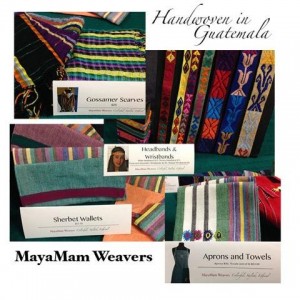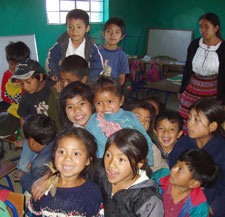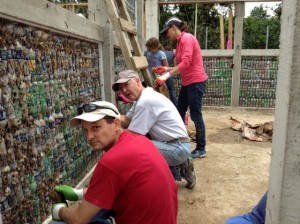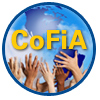The news from Central America is so shocking and depressing, we thought it would be helpful to recommend four organizations that are working in Guatemala to try to combat the crushing effects of poverty and violence that are the result of U.S. foreign policy and Guatemalan complicity in the crushing effects of that policy on Guatemalan people. These effects are most painfully felt among the indigenous Mayan people. Quotations are from the web sites of the organizations.
!. Grupo Cajola (www.grupocajola.org)
“We are a group of Guatemalans and friends of Guatemalans, mostly from the town of Cajolá in the department of Quetzaltenango in Guatemala, and most of us are Maya Mam. (The Mam people are one of the four largest groups of Maya people now living in Guatemala.) Many of us have had to migrate to the United States out of necessity — to earn money for food, medical care, school, or housing for our families. Nearly 94% of Cajolá is poor, and nearly 40% of us live in the United States. We have organized ourselves to watch out for each other, especially during hard times, such as when someone dies, or gets sick. Some of us have returned to Guatemala, to Cajolá, and we are working there to organize the community to develop opportunities for a better life so that no one has to leave his family and community behind in order to survive.”
2. Mayan Families (www.mayanfamilies.org)

Mayan Families works with Maya indigenous communities of the Lake Atitlan region of Guatemala. The information below is taken from the web site, and is very helpful in understanding some of the reasons Guatemalans are forced to make the dangerous journey to the U.S. to survive.
“EDUCATION:
Approximately 30% of all Guatemalan adults over 15 cannot read or write.
Only 22% of children who complete the sixth grade move on to the Junior High level. The reasons are largely economic. Most families can’t afford the tuition for an education, and young people are expected to support the family after the sixth grade.
This situation is even more extreme among the indigenous population with 53.5% of young Mayan people aged 15-19 not completing primary education.
Only 54% of indigenous girls are in school, compared with 71% of indigenous boys. By the age of 16, only 25% of indigenous girls are enrolled, compared with 45% of boys.
HEALTH:
Approx 49% of children in Guatemala are chronically malnourished. This is the fourth highest rate in the world. In indigenous communities the rate is closer to 70%.
Although infant and child mortality has been steadily decreasing throughout Latin America over the last four decades, child mortality is still 70% higher among indigenous children.
Malnutrition is twice as frequent among indigenous children.
The rate of stunting [height/age] for Guatemala overall is 44%, but for indigenous children the rate is 58%, higher than either Yemen or Bangladesh.
Guatemala is cited as having the highest annual incidence of malaria in Central America. (In 2005 almost half of the registered malaria cases in Central America where in Guatemala)
There is a 13 year gap in years of life expectancy between indigenous and non-indigenous people
40% of the country lacks access to water and sanitation systems and have limited access to an adequate diet due to income restrictions.
Only 34% of women of reproductive age use a modern method of birth control, while almost a third report an unmet need for family planning.
The fertility rate (4.4) is the highest in Latin America. At the current annual growth rate of 2.5%, the population is expected to double within the next 30 years.
In the past 50 years, the country’s population has quadrupled.
VIOLENCE:
El Salvador, Honduras and Guatemala now constitute the most violent area in the world outside actual war zones.
Guatemala has more than 40 murders/week in the capital alone and 17 murders/day across the country.
WORK AND INCOME:
Indigenous people suffer from discrimination in terms of employment and income making on average about half of what non-indigenous workers earn.
In Guatemala, indigenous peoples’ poverty rates are 2.8 times higher than the rest of the population.
Half the population lives on incomes below the poverty line and 17% are considered extremely poor by the United Nations.
Guatemala is the most populous of the Central American countries with a GDP per capita of roughly one-half that of the average for Latin America and the Caribbean.”
3. Hug it Forward www.hugitforward.org

Hug It Forward is a grass-roots organization that facilitates education and awareness by empowering communities in Latin America to build “bottle schools”.
Bottle schools are schools built using “eco-bricks”: plastic bottles stuffed with inorganic trash. Entire communities come together to build a more sustainable educational infrastructure for their future.
Hug It Forward’s goal is to share the bottle school technology so that communities all over the world can build their own bottle school.
4. The Sienna Project (www.siennaproject.org)

The Sienna Project builds schools in small indigenous mountain villages in the Highlands of Guatemala, where there may not be enough classrooms or no classrooms at all. The national government pays teachers’ salaries, but does not provide funds for school buildings. In many villages children never go to school for lack of classrooms.
